Space
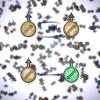 <p>Just as diamonds with perfect symmetry may be unusually brilliant jewels, the quantum world has a symmetrical splendor of high scientific value. Confirming this exotic quantum physics theory, JILA physicists led by theorist Ana Maria Rey and experimentalist Jun Ye have observed the first direct evidence of symmetry in the magnetic properties—or nuclear “spins”—of atoms. </p>
<p>Just as diamonds with perfect symmetry may be unusually brilliant jewels, the quantum world has a symmetrical splendor of high scientific value. Confirming this exotic quantum physics theory, JILA physicists led by theorist Ana Maria Rey and experimentalist Jun Ye have observed the first direct evidence of symmetry in the magnetic properties—or nuclear “spins”—of atoms. </p>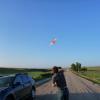 <p>An international research effort organized by the University of Colorado Boulder conducted the first multiple, unmanned aircraft interception of a telltale rush of cold air preceding a thunderstorm known as a “gust front” as it rolled across the Pawnee National Grassland in northeast Colorado on Aug. 14.</p>
<p>An international research effort organized by the University of Colorado Boulder conducted the first multiple, unmanned aircraft interception of a telltale rush of cold air preceding a thunderstorm known as a “gust front” as it rolled across the Pawnee National Grassland in northeast Colorado on Aug. 14.</p>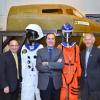 <p>Sierra Nevada Corporation’s (SNC) Space Systems is pleased to announce it is expanding its relationship with the University of Colorado Boulder through the signing of a letter of cooperation with CU-Boulder’s BioServe Space Technologies (BioServe). Through the cooperation, SNC and BioServe will jointly explore ways the <em>Dream Chaser</em>® Space Utility Vehicle (SUV) can serve as an orbital platform for scientific experiments in microgravity and space life science research.</p>
<p>Sierra Nevada Corporation’s (SNC) Space Systems is pleased to announce it is expanding its relationship with the University of Colorado Boulder through the signing of a letter of cooperation with CU-Boulder’s BioServe Space Technologies (BioServe). Through the cooperation, SNC and BioServe will jointly explore ways the <em>Dream Chaser</em>® Space Utility Vehicle (SUV) can serve as an orbital platform for scientific experiments in microgravity and space life science research.</p>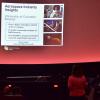 <p>Members of the Boulder Chamber, a nonprofit business support and advocacy organization, visited CU-Boulder July 29 to learn about the university’s latest advances in space science and aerospace.</p>
<p>Members of the Boulder Chamber, a nonprofit business support and advocacy organization, visited CU-Boulder July 29 to learn about the university’s latest advances in space science and aerospace.</p>
<p>The Aerospace Industry Insights event, held at Fiske Planetarium, brought together local, state and federal officials; CU-Boulder faculty, students and administrators; and leaders from the local business community. The purpose of the event, the first in a series sponsored by CU-Boulder and the Boulder Chamber, was to highlight for the business community CU-Boulder's research and innovation in order to foster continued partnership and economic growth.</p>- <p>Something is amiss in the universe. There appears to be an enormous deficit of ultraviolet light in the cosmic budget.</p>
<p>Observations made by the Cosmic Origins Spectrograph, a $70 million instrument designed by the University of Colorado Boulder and installed on the Hubble Space Telescope, have revealed that the universe is “missing” a large amount of light.</p> 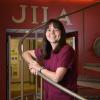 <p>Deborah Jin has won the 2014 Isaac Newton Medal, the highest accolade given by the Institute of Physics. She was cited for her experimental work in laser cooling atoms. This work has led to the practical demonstration of universal laws that upderpin fundamental quantum behavior. </p>
<p>Deborah Jin has won the 2014 Isaac Newton Medal, the highest accolade given by the Institute of Physics. She was cited for her experimental work in laser cooling atoms. This work has led to the practical demonstration of universal laws that upderpin fundamental quantum behavior. </p>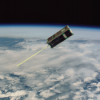 <p>A NASA-funded miniature satellite built by University of Colorado Boulder students to scrutinize solar flares erupting from the sun’s surface is the latest example of the university’s commitment to advancing aerospace technology and space science through strong partnerships with industry and government.</p>
<p>A NASA-funded miniature satellite built by University of Colorado Boulder students to scrutinize solar flares erupting from the sun’s surface is the latest example of the university’s commitment to advancing aerospace technology and space science through strong partnerships with industry and government.</p>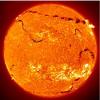 <p>In a discovery decades in the making, scientists have detected the first of a “theoretical” class of stars first proposed in 1975 by physicist Kip Thorne and astronomer Anna Żytkow.</p>
<p>In a discovery decades in the making, scientists have detected the first of a “theoretical” class of stars first proposed in 1975 by physicist Kip Thorne and astronomer Anna Żytkow.</p>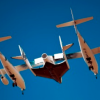 <p>A University of Colorado Boulder payload carrying a novel device designed to reduce the weight and cost of spacecraft fuel pumping systems has been manifested for launch on a suborbital space plane called SpaceShipTwo developed by the aerospace company Virgin Galactic.</p>
<p>A University of Colorado Boulder payload carrying a novel device designed to reduce the weight and cost of spacecraft fuel pumping systems has been manifested for launch on a suborbital space plane called SpaceShipTwo developed by the aerospace company Virgin Galactic.</p>- <p>Jet Propulsion Laboratory Director Charles Elachi and his senior management team will be on the University of Colorado Boulder campus May 22 to sign a memorandum of understanding with top university officials to continue and broaden a rich tradition of collaboration on space and Earth-science efforts going back nearly 50 years.</p>
<p>Elachi will sign the MOU May 22 with CU-Boulder Chancellor Philip P. DiStefano. Located in Pasadena, Calif., JPL is a federally funded research and development facility managed by the California Institute of Technology for NASA.</p>


